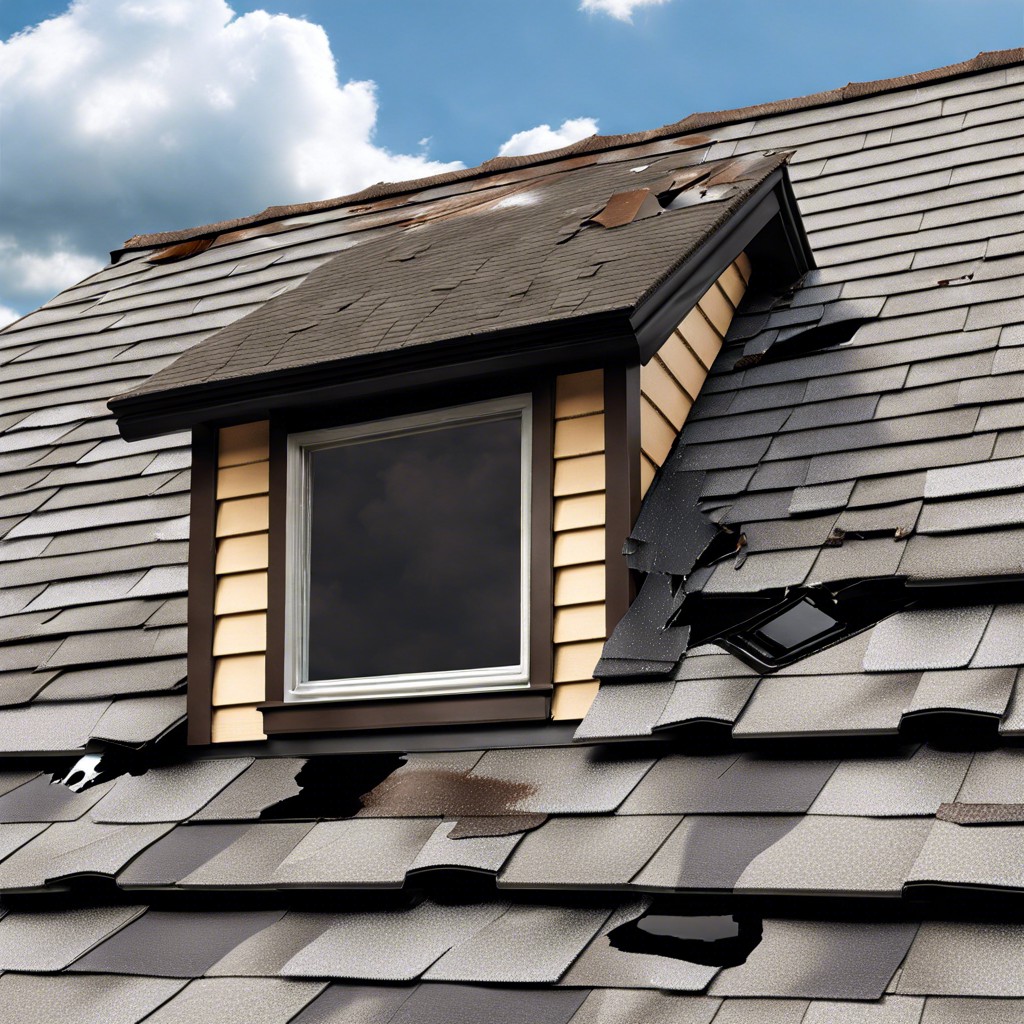Last updated on
Learn how to effectively identify and fix leaks on your roof with practical steps and expert tips for a durable repair.
Key takeaways:
- Regularly inspect your roof for signs of leaks.
- Check the attic and exterior for water stains and damage.
- Have the necessary materials on hand for repairs.
- Assess the severity of the damage to determine repair costs.
- Choose a licensed, insured, and experienced roofing contractor.
Leaky Roof Overview

A leaky roof can pose a serious threat to the structural integrity of a home if not addressed promptly. Moisture infiltration from a leak can lead to damaged ceilings, walls, and electrical systems, as well as foster mold growth. Commonly, leaks occur at points of roofing wear or damage such as:
- Broken or missing shingles or tiles, which directly expose the underlayment to water.
- Damaged or improperly sealed flashing around chimneys, vents, or skylights that allows water to seep through the gaps.
- Clogged gutters which cause water to back up under the shingles.
- Cracked rubber boots around vent pipes that deteriorate over time due to exposure to the elements.
Understanding these potential sources is critical for homeowners to recognize early signs of a leak and address them before they lead to more substantial damage. Regular roof inspections, especially after severe weather conditions, are advisable to catch and repair roof leaks early.
Identifying the Source of the Leak
Initiating a search for a roof leak should commence in the attic, if accessible. With a flashlight, inspect for water stains, streaks, or wood rot. During daylight, look for any light penetrating through the roof, as this often indicates a breach. On the exterior, assess for missing, damaged, or aging shingles, which are common leak instigators.
Checking around roof penetrations is crucial; vents, chimneys, and dormers are notorious for developing leaks. The flashing—metal strips that seal these penetrations—can corrode, lift or separate over time, allowing water ingress.
Gutters should also be examined as clogged or damaged gutters can cause water to back up and seep under roofing materials. Pay attention to the valleys where two roof slopes meet; improper sealing or compromised shingles in these areas can lead to leaks.
In climates prone to ice dams, these can force water to back up under the shingles. Look for signs of water intrusion along the roof’s edges. Remember, water can travel before dripping, so the leak source may not be directly above the evidence of the leak inside the home.
Materials Needed for Leak Repairs
Having the right materials is crucial for effectively repairing a roof leak. For minor repairs, essential items include roofing cement, reinforcing fabric for the patch, and a putty knife to apply the cement uniformly. Shingles or tiles may be needed if replacements are required due to damage.
For shingle roofs, a flat bar can be used for prying up affected shingles, and roofing nails are necessary for securing new ones. Flashing material is also important, particularly in areas near protrusions like vents and chimneys, where leaks commonly occur. Sealant should be used along with new flashing to ensure a watertight seal.
Rubber membrane or EPDM roofs might need specific primers and seam tapes designed to adhere to the material. For metal roofs, sheet metal and a metal brush for cleaning the repair site should be on hand, along with sealant formulated for metal-to-metal adhesion.
In some cases, replacement underlayment may be necessary, whether it’s traditional felt, synthetic products, or self-adhering membranes. All materials must be compatible with your roof type to ensure repairs last.
Remember, thorough preparation by gathering the correct materials before starting the job will result in a more durable and effective roof leak repair.
Determine the Cost to Repair a Roof Leak
Assessing the severity of the damage is imperative in determining repair costs. Minor issues such as replacing a few shingles may only require a small budget. However, extensive water damage can significantly inflate expenses.
The accessibility of the roof also impacts the price. High-pitched or multistory roofs often demand additional safety equipment and labor, leading to higher charges.
Material choice dictates part of the cost. Common asphalt shingles are typically less expensive than slate or metal options. Additionally, the price may vary based on whether materials match existing roofing or entail a complete replacement for consistency.
Labor costs vary by region and the expertise of the roofing professionals. Specialized contractors might command higher fees but can provide greater assurance of quality workmanship.
Lastly, potential structural repairs, such as fixing rafters or plywood sheathing, can add to the overall expense. These additional issues are usually uncovered during a comprehensive roof inspection.
Selecting a Qualified Roofing Contractor
When selecting a roofing contractor, ensure they are licensed, insured, and have a record of reliability. Licensing offers proof of compliance with local codes and laws, while insurance protects you from liability in case of accidents on your property. Check for a contractor’s reputation through customer reviews and testimonials. Additionally, look for experience specifically in roof repairs rather than general construction, as specialized skills are required for quality leak remediation. Request detailed estimates from multiple contractors for cost comparison, but remember the cheapest option is not always the best. Finally, a solid warranty on both materials and labor signals the contractor’s confidence in their quality of work.




